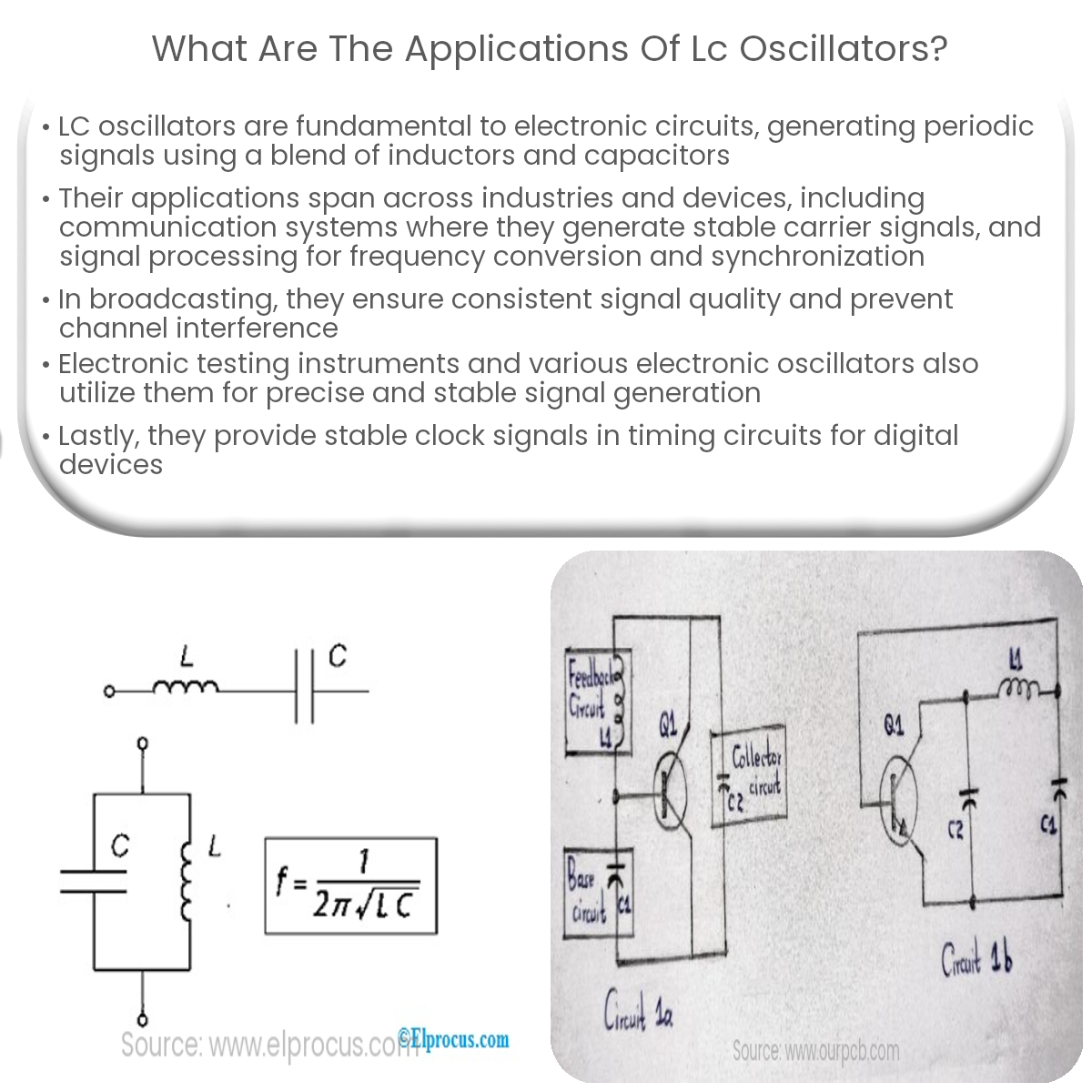LC oscillators are used in communication systems, signal processing, broadcasting, test equipment, electronic oscillators, and timing circuits.
Applications of LC Oscillators
LC oscillators are fundamental components in electronic circuits that generate periodic signals, such as sine waves or square waves. They use a combination of inductors (L) and capacitors (C) to store and release energy in a continuous cycle. The numerous applications of LC oscillators can be found in various industries and electronic devices. Here are some key examples:
Communication systems: LC oscillators are widely used in radio frequency (RF) communication systems for generating stable carrier signals. These signals are modulated with information, such as voice or data, and transmitted wirelessly between devices.
Signal processing: In signal processing applications, LC oscillators are used to produce reference signals that can be used for frequency conversion, synchronization, or clock generation. For example, they can be found in phase-locked loops (PLLs), which are employed in frequency synthesizers and clock recovery circuits.
Television and radio broadcasting: LC oscillators play a significant role in television and radio broadcasting, where they help generate the carrier frequencies for different channels. The oscillator’s stability and frequency accuracy are crucial for maintaining consistent signal quality and preventing interference between channels.
Test and measurement equipment: Many electronic test and measurement instruments, such as signal generators, spectrum analyzers, and network analyzers, utilize LC oscillators to generate precise and stable signals for analyzing, testing, or troubleshooting electronic circuits.
Electronic oscillators: Various types of electronic oscillators, such as Hartley, Colpitts, and Clapp oscillators, incorporate LC circuits as their core components. These oscillators are used in a wide range of applications, from audio to radio frequency generation.
Timing circuits: LC oscillators can be used in timing circuits to provide stable clock signals for digital devices, such as microprocessors and microcontrollers. They ensure proper operation, coordination, and synchronization between various components within the device.
In conclusion, LC oscillators are essential components in many electronic systems due to their ability to generate stable and accurate signals. They have a wide range of applications, from communication and broadcasting to test and measurement equipment, making them indispensable in modern electronics.



